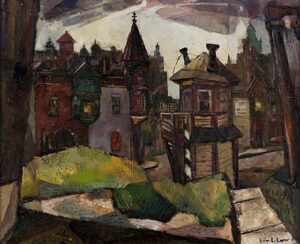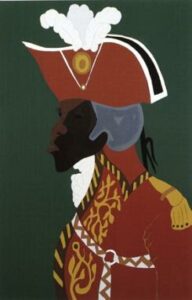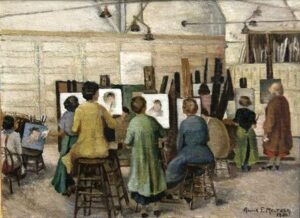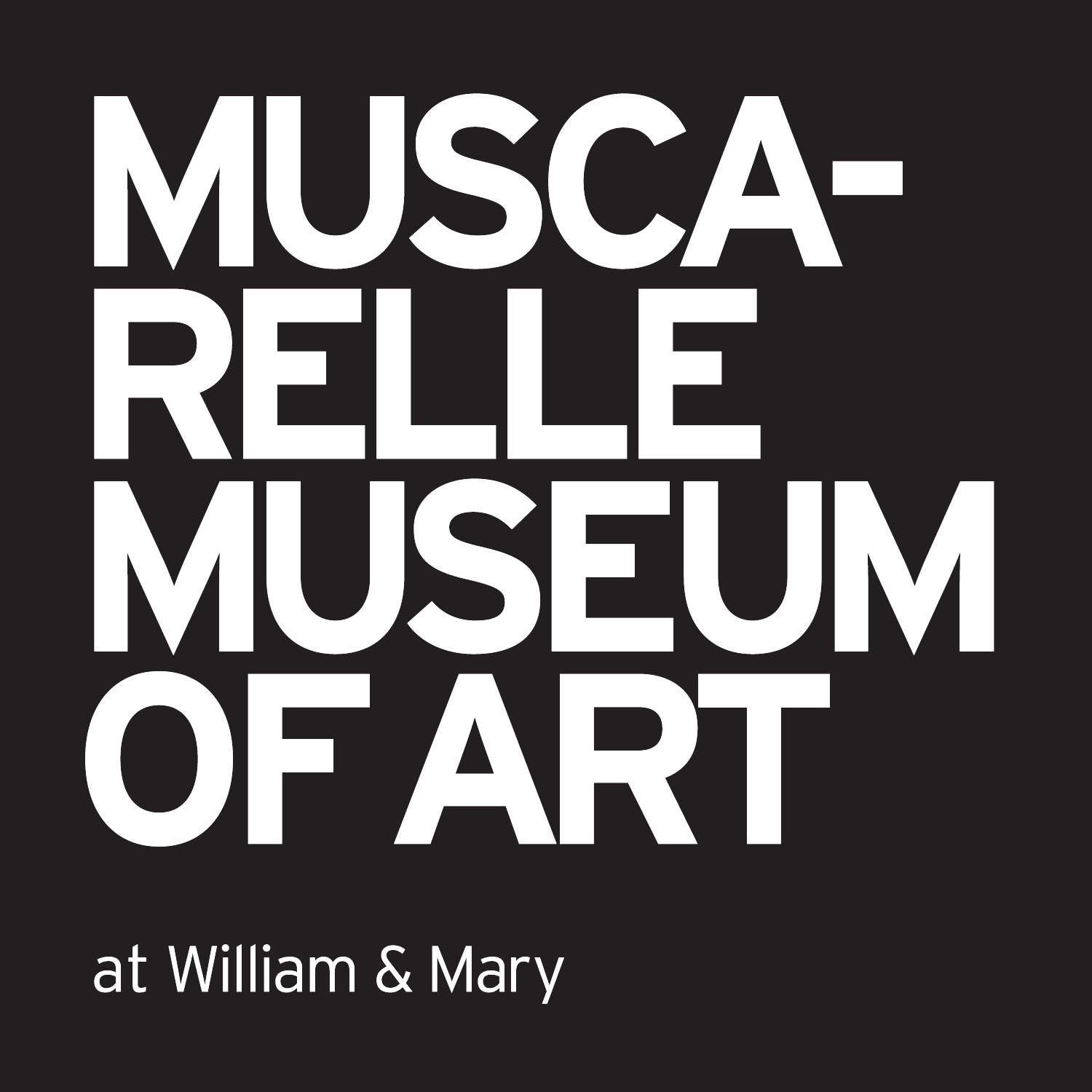Permanent Collection Highlights
By Maya Sardar, Events & Marketing Intern
In the image on the left, onlookers admire The Messiah by Benjamin West, 1814. West during most of his career painted complex multifigure compositions and employed sophisticated glazing techniques that differed dramatically from the painting methods he had learned in Pennsylvania.
The extraordinary stylistic and compositional differences between West’s American and English work are due very much to his three years of study in Italy, when he absorbed the painting styles and compositions of Italian Renaissance and baroque painters, as well as those of his contemporaries. In the 1770s West’s subject matter began to include the religious themes that dominated his work of the late 1770’s and 1780’s.

Here is a painting by Edward L. Loper Sr. named Untitled (View of Wilmington), 1954. Edward L. Loper Sr. was born on the east side of Wilmington, Delaware, on 7 April 1916. He was basically a self taught painter, although he also studied at the Barnes Foundation in Philadelphia for ten years. He is represented in major permanent collections in the Philadelphia Art Museum, the Delaware Art Museum, the Corcoran Gallery in Washington, DC, and more. In 1947 he started teaching full-time and continues to do so. He has private classes in his studio in Wilmington.

These two paintings titled Palo Verde, 2007, and Petrichor II, 2020, are by Emmi Whitehorse. Raised in a traditional Navajo family of sheepherders and trained in printmaking, painting, and art history at the University of New Mexico, Emmi Whitehorse draws on her personal experiences growing up on the Navajo Reservation to create her works. Her artistic gaze is directed toward the beauty of nature and the wider universe and is shaped by “hozho”— the Navajo teaching stressing harmony, balance, beauty, and interconnectedness.

Here is The Battle of Dunkirk by John Singleton Copely, 1814. John Singleton Copley was born in Boston in 1738, and grew up there, training in the visual arts under his step-father Peter Pelham (c. 1697-1751), an English engraver who had immigrated in 1727 and married Copley's widowed mother in 1748. Copley's earliest paintings, from the mid-1750s, reveal the influence of English mezzotint portraits as well as the work of local and itinerant artists. He experimented with many media: oil on canvas, miniatures on copper or ivory, pastel, and printmaking. By the late 1750s he was established as a portrait painter.

This is General Toussaint L’Ouverture by Jacob Lawrence, 1986. This painting is part of an exhibition that features fifteen original silkscreens by one of America’s leading figurative twentieth-century artists, Jacob Lawrence (1917-2000). From Lawrence’s series on The Life of Toussaint L’Ouverture, Haiti to Harlem provides a visual narrative of one of the most consequential events in modern history. Featuring highly colorful and dynamic works on the Haitian Revolution and its leader, this exhibition utilizes coursework produced by William & Mary students in the required practicum course for Art History majors, The Curatorial Project (ARTH 331), taught by Associate Professor of Art History Sibel Zandi-Sayek in Fall 2024.

This is Color Poem No. 1 by Hans Hofmann, 1950. Renowned as an influential teacher for generations of artists, Hofmann played a pivotal role in the development of Abstract Expressionism in the United States. Despite Hofmann’s contributions to the Abstract Expressionist movement, his own work was primarily rooted in the visible world, echoing the chromatic relationships, as well as the structural and spatial tensions of line and form found in nature. Departing from the traditional aesthetic tools of linear perspective and representational modeling, Hofmann abstractly alluded to volume and movement on a canvas through the use of color, shape, and texture alone. The most influential of Hofmann’s innovative approaches to abstract composition was his “push-pull” theory, where visual tension makes colors advance and recede before the eye, thus effectively producing three-dimensionality on a two-dimensional canvas.

This is Alexander Brook's Art Class, Art Students League by Anna Meltzer, 1936. Offering a glimpse into the artist’s life as a student in New York City, this canvas is essentially autobiographical. Meltzer was born in New York, where she remained to pursue her formal art training, studying at the Cooper Union Art School and at the Art Student’s League under Alexander Brook, a WPA painter and adherent of the realist style. For part of 1936, Meltzer was enrolled in a class taught by Brook, and she painted this canvas while she was his pupil. The artist’s early work adopts the subdued tones and everyday subject matter of the Ashcan artists, many of whom had taught at the Art Students League. After establishing herself as an artist, Meltzer served as an instructor at The College of the City of New York from 1951-62 and director of the Anna E. Meltzer School of Art from 1940 to her death in 1976.



